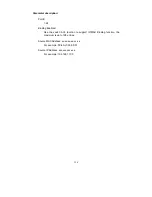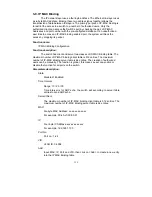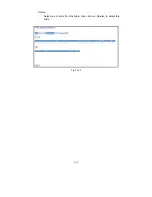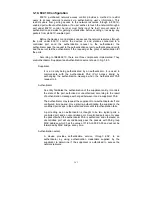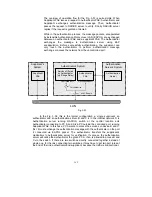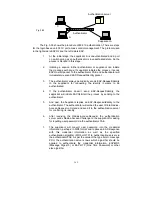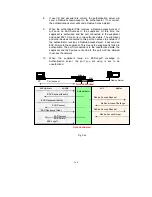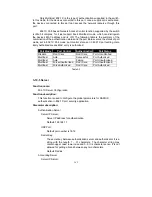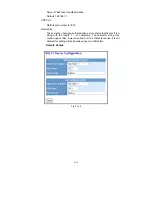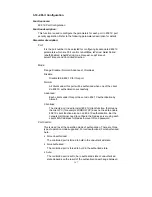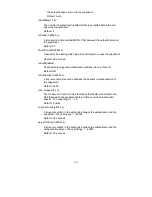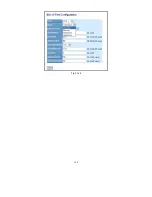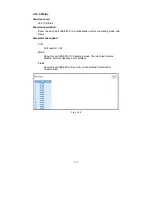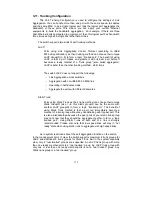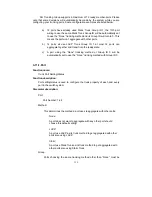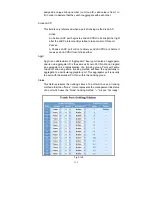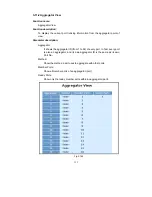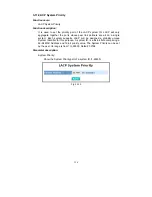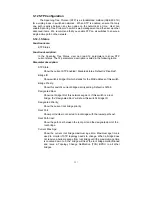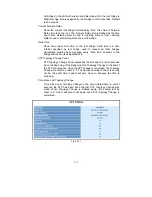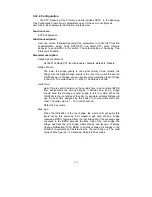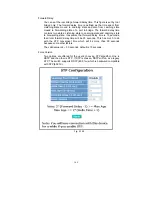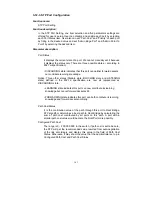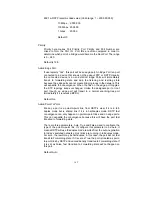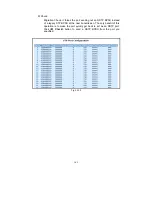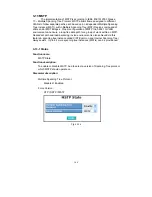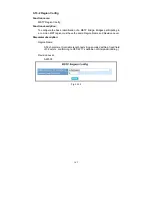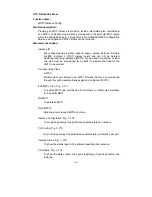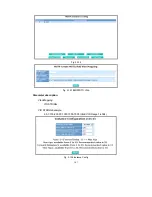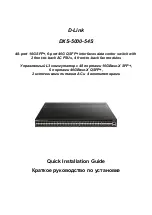
152
3-11. Trunking Configuration
The Port Trunking Configuration is used to configure the settings of Link
Aggregation. You can bundle more than one port with the same speed, full duplex
and the same MAC to be a single logical port, thus the logical port aggregates the
bandwidth of these ports. This means you can apply your current Ethernet
equipments to build the bandwidth aggregation. For example, if there are three
Fast Ethernet ports aggregated in a logical port, then this logical port has bandwidth
three times as high as a single Fast Ethernet port has.
The switch supports two kinds of port trunking methods:
LACP:
Ports using Link Aggregation Control Protocol (according to IEEE
802.3ad specification) as their trunking method can choose their unique
LACP GroupID (1~8) to form a logic “trunked port”. The benefit of using
LACP is that a port makes an agreement with its peer port before it
becomes a ready member of a “trunk group” (also called aggregator).
LACP is safer than the other trunking method - static trunk.
The switch LACP does not support the followings:
⎯
Link Aggregation across switches
⎯
Aggregation with non-IEEE 802.3 MAC link
⎯
Operating in half-duplex mode
⎯
Aggregate the ports with different data rates
Static Trunk:
Ports using Static Trunk as their trunk method can choose their unique
Static GroupID (also 1~8, this Static groupID can be the same with
another LACP groupID) to form a logic “trunked port”. The benefit of
using Static Trunk method is that a port can immediately become a
member of a trunk group without any handshaking with its peer port. This
is also a disadvantage because the peer ports of your static trunk group
may not know that they should be aggregate together to form a “logic
trunked port”. Using Static Trunk on both end of a link is strongly
recommended. Please also note that low speed links will stay in “not
ready” state when using static trunk to aggregate with high speed links.
As to system restrictions about the port aggregation function on the switch,
In the management point of view, the switch supports maximum 8 trunk groups for
LACP and additional 8 trunk groups for Static Trunk. But in the system capability
view, only 8 “real trunked” groups are supported. An LACP trunk group with more
than one ready member-ports is a “real trunked” group. An LACP trunk group with
only one or less than one ready member-ports is not a “real trunked” group. Any
Static trunk group is a “real trunked” group.
Summary of Contents for GS-2224L
Page 1: ......
Page 2: ......
Page 34: ...24 Fig 2 15 Office Network Connection Fig 2 14 Peer to peer Network Connection ...
Page 78: ...68 Fig 3 28 ...
Page 83: ...73 Fig 3 31 ...
Page 91: ...81 Fig 3 39 Fig 3 40 Fig 3 41 ...
Page 113: ...103 Fig 3 67 Ingress Port Fig 3 68 ...
Page 115: ...105 Fig 3 71 Fig 3 72 Fig 3 73 ARP Fig 3 74 ARP ...
Page 116: ...106 Fig 3 75 ARP Fig 3 76 ARP Fig 3 77 ARP Fig 3 78 ARP ...
Page 117: ...107 Fig 3 79 ARP Fig 3 80 ARP Fig 3 81 ARP Fig 3 82 ARP ...
Page 118: ...108 Fig 3 83 ARP Fig 3 84 ARP Fig 3 85 ARP Fig 3 86 ARP Fig 3 87 ARP ...
Page 119: ...109 Fig 3 88 IPv4 Fig 3 89 IPv4 Fig 3 90 IPv4 ...
Page 120: ...110 Fig 3 91 IPv4 Fig 3 92 IPv4 Fig 3 93 IPv4 Fig 3 94 IPv4 Fig 3 95 IPv4 ...
Page 121: ...111 Fig 3 96 IPv4 Fig 3 97 IPv4 Fig 3 98 IPv4 Fig 3 99 IPv4 Fig 3 100 IPv4 ...
Page 122: ...112 Fig 3 101 IPv4 Fig 3 102 IPv4 Fig 3 103 IPv4 Fig 3 104 IPv4 ...
Page 123: ...113 Fig 3 105 IPv4 Fig 3 106 IPv4 Fig 3 107 IPv4 ...
Page 124: ...114 Fig 3 108 IPv4 Fig 3 109 IPv4 Fig 3 110 IPv4 Fig 3 111 IPv4 ...
Page 125: ...115 Fig 3 112 IPv4 Fig 3 113 IPv4 Fig 3 114 IPv4 ...
Page 126: ...116 Fig 3 115 IPv4 Fig 3 116 IPv4 Fig 3 117 IPv4 ...
Page 127: ...117 Fig 3 118 Action Fig 3 119 Rate Limiter ...
Page 128: ...118 Fig 3 120 Port Copy Fig 3 121 DMAC Filter ...
Page 129: ...119 Fig 3 122 VLAN ID Filter Fig 3 123 VLAN ID Filter Fig 3 124 Tag Priority ...
Page 141: ...131 Fig 3 126 Set up Policy Rules Fig 3 127 Set up Policy Rules Fig 3 128 Set up Policy Rules ...
Page 143: ...133 Fig 3 132 Set up Port Policies Fig 3 133 Set up Port Policies Finish ...
Page 159: ...149 Fig 3 145 ...
Page 204: ...194 Fig 4 1 Fig 4 2 ...

